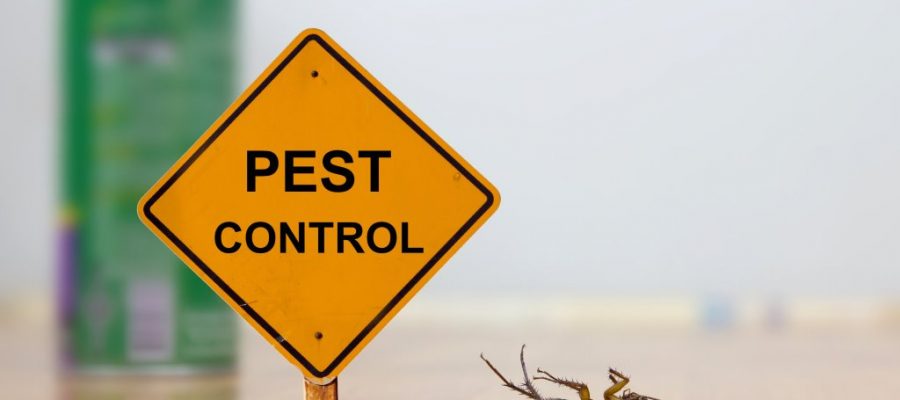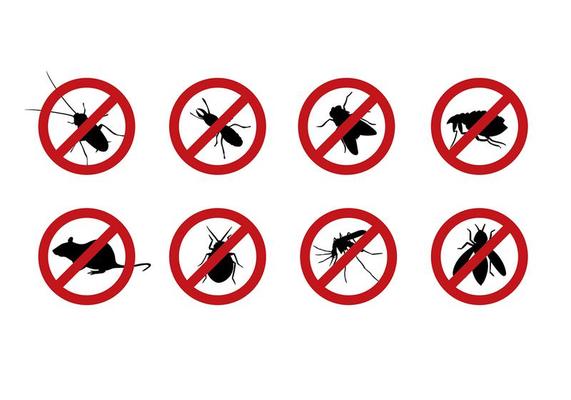Exploring Different Approaches and Strategies for Comprehensive Bug Control in Residential Spaces
The landscape of pest control in household areas has actually advanced dramatically, necessitating a comprehensive understanding of various approaches that can be used for efficient administration. Typical chemical treatments, while effective, are significantly being enhanced by green options and Integrated Pest Administration (IPM) techniques. House owners need to take into consideration preventative procedures, such as normal tracking and accurate bug recognition, to keep a healthy and balanced setting. However, the real difficulty depends on striking an equilibrium between effectiveness and safety-- an expedition that exposes the subtleties of each strategy and its effects for lasting living.
Understanding Insect Control Basics
Effective insect control is necessary for preserving a healthy and risk-free living setting. Understanding the basics of parasite control involves acknowledging the kinds of pests that typically invade household rooms, the possible risks they pose, and the importance of preventative actions. Common family parasites consist of rodents, insects, and various other unwanted creatures that can endanger health, damages home, and trigger health and wellness issues.
A crucial very first step in pest control is determining the specific bugs existing. This can entail examining areas such as attics, cooking areas, and cellars, where parasites are most likely to thrive. As soon as identified, it is vital to recognize their habits, reproducing cycles, and favored environments, which can inform appropriate control methods.
Safety nets are basic to effective insect administration. These include sealing access points, maintaining sanitation, and reducing mess to get rid of hiding places. Furthermore, proper food storage space and waste management can substantially decrease the attraction of a home for bugs.

Conventional Chemical Treatments
Among the numerous pest control strategies, traditional chemical therapies have long been utilized to deal with infestations in household rooms. These therapies normally involve the application of chemical pesticides designed to get rid of parasites such as bugs, rodents, and various other undesirable organisms. The efficiency of these chemicals can differ, depending upon the sort of pest, the formulation of the pesticide, and the method of application.
Typical classes of typical chemical therapies include insecticides, herbicides, rodenticides, and fungicides, each customized to battle certain insects. Insecticides, as an example, may target roaches, ants, or termites, while rodenticides are particularly created to regulate rodent populations. These chemicals are commonly offered in numerous forms, consisting of sprays, baits, and granules, allowing home owners adaptability in application.
Despite their performance, traditional chemical therapies increase worries pertaining to possible poisoning to people, pets, and useful microorganisms in the atmosphere. It is essential for homeowners to very carefully follow application guidelines and safety and security preventative measures to lessen threats. Integrated Insect Administration (IPM) approaches can complement these treatments, making certain a much more holistic approach to pest control while making the most of efficiency and safety in residential setups.
Eco-Friendly Pest Control Options
Environmentally friendly parasite control alternatives are acquiring appeal as home owners seek much safer and a lot more sustainable options to typical chemical therapies. These approaches focus on the wellness of both homeowners and the setting, lessening the effect of bug control practices.
One extensively taken on environmentally friendly method is using natural repellents originated from vital oils, such as peppermint and citronella. These oils not just deter insects however also give positive fragrances for interior rooms. Moreover, diatomaceous earth, a powder made from fossilized algae, acts as an all-natural pesticide by damaging the exoskeletons of bugs upon contact, resulting in dehydration.
An additional reliable strategy includes advertising biodiversity in gardens and lawns. Introducing useful bugs, such as ladybugs and lacewings, can normally regulate pest populaces (Chicago pest control for restaurants). Furthermore, employing catches made from eco-friendly materials can assist capture and get rid of bugs without creating damage to the ecosystem
Routine upkeep, such as sealing entry factors and proper cleanliness, additional improves the effectiveness of environmentally friendly pest control. Homeowners can take proactive steps to avoid infestations, making certain a much more sustainable living atmosphere while successfully handling pest-related concerns.
Integrated Insect Monitoring Approaches
Carrying out integrated bug management (IPM) techniques supplies a thorough approach to pest control that highlights avoidance and lasting services. IPM integrates multiple tactics, concentrating on comprehending insect habits, life process, and environmental characteristics to minimize pest populaces properly. This complex method focuses on non-chemical methods, such as biological control, environment control, and social techniques, to reduce dependence on chemicals.
A foundational element of IPM is monitoring and recognizing insects properly. When treatment is necessary, this entails regular inspections and the facility of activity limits to determine. By understanding the certain bugs affecting property atmospheres, targeted interventions can be employed, lowering the probability of unnecessary chemical applications.
One more critical part of IPM is informing homeowners regarding the importance of hygiene and maintenance methods. By cultivating an environment that prevents insect invasions-- such as securing access factors and handling moisture-- citizens can substantially mitigate the threat of bug troubles. In addition, when chemical controls are regarded needed, IPM advocates for using the least poisonous options to minimize ecological effect. Through these strategies, IPM not just addresses existing insect concerns but additionally promotes lasting practices that advertise long-term bug management success.
Preventative Steps for Residence
To ward off possible insect problems, homeowners must take on a proactive approach that emphasizes Preventative pest control services Chicago preventative measures. This begins with preserving a tidy and well organized home, as clutter and food debris draw in insects. Preventative pest control services Chicago. Routinely vacuuming, sweeping, and wiping down surfaces can dramatically lower the danger of invasions
Additionally, sealing entry points is vital. Home owners must inspect windows, doors, and foundation cracks for gaps that can enable parasites accessibility to the home. Making use of caulk and climate stripping can effectively obstruct these entranceways.
Appropriate food storage space is another crucial step. Storing food in closed containers and immediately tidying up crumbs or spills aids discourage rodents and pests.
Additionally, managing outside environments can avoid pests from encroaching on residential areas. Homeowners should guarantee that drainage systems are operating well, and landscaping is maintained neat. Trimming bushes and trees away from your house and eliminating standing water can further reduce parasite habitats.

Conclusion
In verdict, efficient parasite control in property spaces necessitates a complex method that integrates conventional chemical therapies with environmentally friendly practices and Integrated Parasite Management methods. By prioritizing preventative measures, such as keeping sanitation and sealing access factors, property owners can significantly minimize insect events.
Recognizing the essentials of bug control involves identifying the types of parasites that commonly get into household spaces, the prospective dangers they position, and the importance of preventive procedures.A crucial initial step in pest control is recognizing the particular parasites present. Integrated Bug Monitoring (IPM) techniques can complement these therapies, ensuring a much more holistic approach to pest control while making best use of effectiveness and security in residential setups.
Carrying out integrated pest monitoring (IPM) approaches uses a thorough method to pest control that emphasizes prevention and lasting services.In conclusion, effective bug control in domestic spaces demands a multifaceted method that combines standard chemical treatments with environment-friendly techniques and Integrated Bug Management methods.